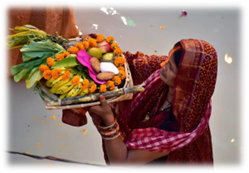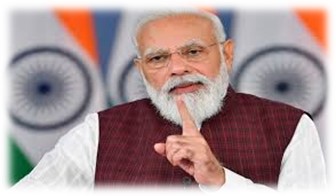Chhath Puja is one of the biggest Hindu festivals. It is mostly celebrated mostly in Bihar, Jharkhand, Uttar Pradesh, Madhya Pradesh and West Bengal.
Kolkata: This festival is related with the Sun God and the Goddess Usha. People seek blessings of Sun God by offering the Arghya and worship Chhati Maiya. This festival lasts for four days and includes ritual like bathing in holy river, strict fasting, and the offering of prayers to the setting and rising sun.

| Day-1 | November 5 | Nahaye Khaye (Bath & Feast) |
| Day-2 | November 6 | Kharna |
| Day-3 | November 7 | Chhath Puja, Sandhya Arghya |
| Day-4 | November 8 | Parana Day, Usha Arghya |
Day 1: Nahaaye Khaaye (Bath & Feast)
The very first day of the Dala Chhath is called Naha Khay. Women devotees purifies themselves through this ritual. On this day, the Vratti takes a bath particularly in the river Ganga & bring the holy water of the river to make Prasad at home.
Day 2: Kharna (Fasting)
A long day fast without water (Nirjala) is observed by the devotees. They fast for a whole day and end it in the evening after worshipping Chhathi Maiya and easting Prasad. Offering also called Prasad, are made of Rasiao-kheer (cooked rice in milk), puris (deep fried puffs) or chapattis and bananas. The Prasad is distributed among other family members, relatives and neighbours.
Day 3: Sandhya arghya (Sunset vibes)
On third day Vrattis observe the fast without taking water and food. The whole day is spent in the preparation of the puja offerings. All the offerings (Arghya) are kept in Dauri (a basket made of bamboo sticks), Supali (made of fine bamboo sticks) or in metal basket. The offerings are comprised of Thekua, Puri, Coconut, Banana, Apple, Orange, and other seasonal fruits. They perform this ritual after sunset. To perform evening rituals, people go to the banks of the river or pond or other clear water bodies. All the Vrattis, family members, friends, and neighbours get together there and offer Sandhya Arghya to the Sun God.

Day 4: Usha arghya & Parana (Sunrise gratitude & breaking the fast)
This is the last or can say the final day of this auspicious and holy festival. The devotees gather at the bank of the river with their family and friends to offer bhorwa arghya (morning offerings) to the rising Sun. After arghya, devotees knee-down at the ghat to worship Chathi Maiya, distribute thekua and then come back to home.
After their return from the ghat, the devotees or the vrattis take blessings of the elders and break their fast by eating ginger with water.
Food
Different types of delicious foods are made during this time. These includes thekua, kesar ka laddu, kaddu ki sabzi, kheer, gur ki roti, coconut laddu etc. All the dishes prepared with love and honesty symbolize gratitude and hope for well-being, good fortune, and happiness.
Rituals
During the festival, the female folks spend their night by singing traditional Chhath songs.
Historical Significance
Chhath Puja, also known as Surya Shashti. It is said that the rituals of Chhath Puja may even dates back to ancient era, in which it finds a mention in the ancient Vedas, as the Rigveda features hymns adulating the Lord Surya and exemplifies similar customs.
The Sanskrit Epic literature Mahabharata also mentions the custom, describing Draupadi as following the same rites.
Another story reflecting the significance of Chhath Puja is the story of Lord Rama. It is believed that Lord Rama & Mata Sita had kept fast together and offered puja to the Lord Surya in the month of Kartik in Shukla Paksha. They did this puja after returning to Ayodhya from an exile of 14 years.
Importance of Chhat Puja
Energy from a divine source
Sun is regarded as the main source of light and energy. People who worship Lord Surya during Chhath Puja experience success and wealth. It is considered auspicious to thank Lord Sun for the sunlight throughout these days.
Health Advantages
The sun is one of the most significant components of the solar system. It symbolizes the heart, bones, eyes, and general well-being, it is crucial to offer Lord Surya Arghya and worship him fervently in order to preserve physical health and wellbeing.
Spiritual Development
Since the Sun is seen as a person’s soul, worshiping it infuses life into both the physical and spiritual bodies.





